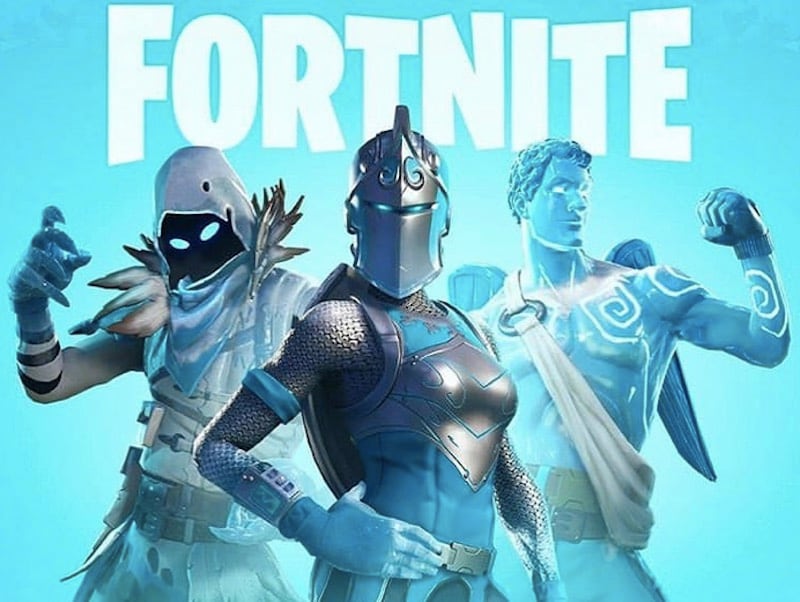- Home
- Games
- Games News
- Fortnite's '14 Days of Fortnite' Event Back This Week Until January 15
Fortnite's '14 Days of Fortnite' Event Back This Week Until January 15

Popular battle royale shooter Fortnite for Android, iOS, PS4, Xbox One, Nintendo Switch, and PC had a special event called '14 Days of Fortnite'. It brought back existing and new limited time events to Fortnite and debuted with the Fortnite 7.10 update alongside expanded support for Android devices with Qualcomm Snapdragon 670 and 710 SoCs. At the time, Epic Games had announced that the event would would end on January 2. This however, was not the case, with Fortnite designer David Spazinski stating on Reddit that it would extend beyond January 2.
"Yes, they [14 Days of Fortnite challenges] can be completed later while 14 Days of Fortnite is active," he said. "Each day during this period a new challenge unlocks, along with its specific reward. Once all 14 days worth of challenges have been unlocked, there will still be a few days to complete them before they go away (IIRC they expire on either the 3rd or 4th of January)."
Considering the timed nature of Fortnite's many challenges, the community was far from pleased as it meant the initial date of January 2 was false. Epic Games' first response was to give those who completed any of the 14 Days of Fortnite challenges an Equalizer Glider to compensate for giving out an incorrect end date for the event. However it soon announced it would bring it back until January 15.
"We communicated an incorrect end date for the 14 Days of Fortnite event and did not feel the Equalizer Glider compensation was the right approach," a post from Epic Games dated January 4 reads. "After further discussion, we've decided to bring back this event early next week through January 15 at 3 AM ET [1:30pm IST]. We'll also be enabling some of the most popular Limited Time Modes that were available during the event."
"Players who were unable to complete those challenges will be able to earn all of the rewards they may have initially missed out on. All challenges will be available to complete for the entire duration of the event. Unfortunately, progress on partially completed challenges has to be reset."
Previously it was revealed that Fortnite for iPhone X could run at 60fps but Epic Games won't allow it. According to the Fortnite developer, the iPhone X A11 Bionic SoC is up to the task, having the ability to produce per-frame rendering times in-line for what's needed to run Fortnite at 60fps. However Fortnite is capped at 30fps instead. A perplexing decision when you consider that last year's iPad Pro can run the game at 60fps. It appears that raw power alone isn't the only factor when deciding Fortnite's frame rate on mobile devices like the iPhone X. In a breakdown of Fortnite's 60fps performance on iOS devices, Digital Foundry explains that Epic Games had to keep the iPhone X's thermals in check too.
"Based on conversations with Epic Games, last year's iPhone X can - in theory - run Fortnite at 60 frames per second," the report reads.
"According to the developer, per-frame rendering times vary between eight to 16ms. In more complex scenarios it would be tight, but that's fast enough to hit 60 frames per second for the majority of the game's duration. However, the reality is that running the last-gen A11 Bionic flat-out would overheat the device, leading to lower CPU and GPU clocks, severely impacted performance and highly compromised battery life. Epic's solution is simple then - lock to 30fps and in the process give the device the thermal headroom to stay cool enough to run at peak frequencies."
- Fortnite Maker Epic Games Made $3 Billion Profit in 2018: Report
- Fortnite Could Run at 60fps on iPhone X but Here’s Why It Doesn't
- What Fortnite’s PS4 Player Count Leak Says About Xbox One and PC
- Fortnite Frozen Legends Pack Now Available, Here’s What You Get
- 14 Days of Fortnite Event Begins, Adds Snowball Launcher, Festive Cheer
- Fortnite 7.10 Update Adds 14 Days of Fortnite Event and More
If you're a fan of video games, check out Transition, Gadgets 360's gaming podcast. You can listen to it via Apple Podcasts or RSS, or just listen to this week's episode by hitting the play button below.
Catch the latest from the Consumer Electronics Show on Gadgets 360, at our CES 2026 hub.
Related Stories
- Samsung Galaxy Unpacked 2025
- ChatGPT
- Redmi Note 14 Pro+
- iPhone 16
- Apple Vision Pro
- Oneplus 12
- OnePlus Nord CE 3 Lite 5G
- iPhone 13
- Xiaomi 14 Pro
- Oppo Find N3
- Tecno Spark Go (2023)
- Realme V30
- Best Phones Under 25000
- Samsung Galaxy S24 Series
- Cryptocurrency
- iQoo 12
- Samsung Galaxy S24 Ultra
- Giottus
- Samsung Galaxy Z Flip 5
- Apple 'Scary Fast'
- Housefull 5
- GoPro Hero 12 Black Review
- Invincible Season 2
- JioGlass
- HD Ready TV
- Laptop Under 50000
- Smartwatch Under 10000
- Latest Mobile Phones
- Compare Phones
- OPPO Reno 15 Pro Max
- Honor Win RT
- Honor Win
- Xiaomi 17 Ultra Leica Edition
- Xiaomi 17 Ultra
- Huawei Nova 15
- Huawei Nova 15 Pro
- Huawei Nova 15 Ultra
- Asus ProArt P16
- MacBook Pro 14-inch (M5, 2025)
- OPPO Pad Air 5
- Huawei MatePad 11.5 (2026)
- Xiaomi Watch 5
- Huawei Watch 10th Anniversary Edition
- Acerpure Nitro Z Series 100-inch QLED TV
- Samsung 43 Inch LED Ultra HD (4K) Smart TV (UA43UE81AFULXL)
- Asus ROG Ally
- Nintendo Switch Lite
- Haier 1.6 Ton 5 Star Inverter Split AC (HSU19G-MZAID5BN-INV)
- Haier 1.6 Ton 5 Star Inverter Split AC (HSU19G-MZAIM5BN-INV)
















